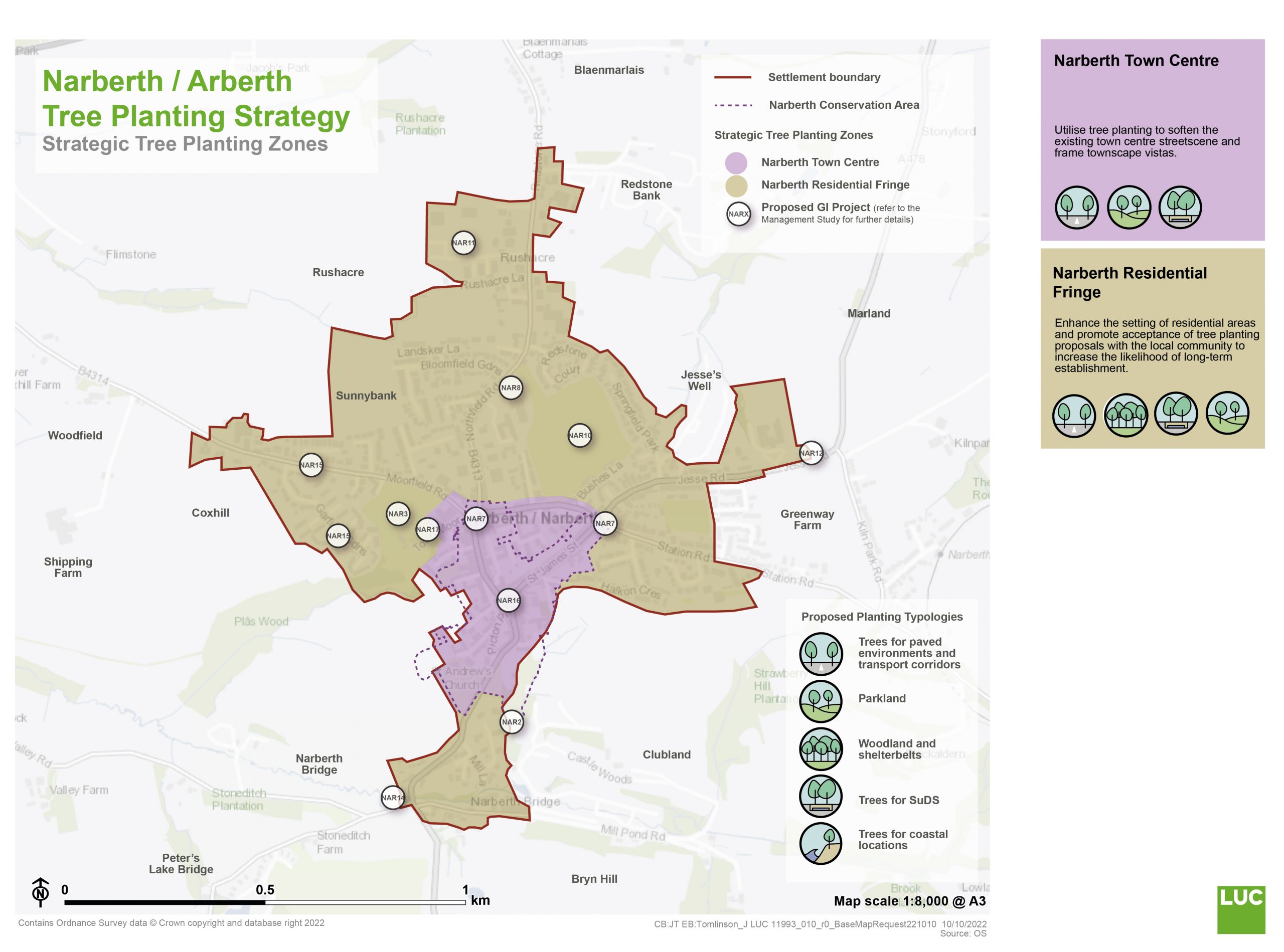- Ensure tree planting complements and does not detract from the distinctive townscape character.
- Tree planting opportunities within public areas in the town centre are highly constrained. Trees may be best placed at key entrances, fringes and wider junctions, utilising narrow form trees to maintain sightlines where needed.
- Where space allows, use ornamental tree species to demarcate key gateways and entrances towards Narberth town centre (such as the A478 / B4314 Junction).
- Utilise tree planting to soften hard landscape areas and create a sense of arrival at key visitor hubs (such as Townsmoor Car Park and route towards the town centre).
- Where trees are removed or lost, the replacement of appropriately located trees should be a priority within the town centre.
Narberth Tree Planting Zones and Sub-Principles
Tree Planting Zones and Sub-Principles for Narberth are shown on the map and drop down list below. Click on the headings to expand.
Narberth Strategic Tree Planting Zones - Download image

×![]()
Narberth Strategic Tree Planting Zones
Zones and Sub-Principles
Land encompassed within Narberth Conservation Area includes the spaces between buildings and existing trees within the designation. PCC should therefore be contacted prior to the commencement of works on existing trees subject to a Tree Preservation Order (TPO) or those located within the boundary of Narberth Conservation Area.
- Seek opportunities to deliver tree planting adjacent to water courses and ditches on the fringes of the urban area. This may be best delivered as wide shelterbelts and woodland corridors that strengthen existing field patterns.
- Enhance the character of local open spaces and sport facilities with boundary trees, seeking opportunities to plant larger canopy parkland trees as a priority (such as at Townsmoor Park). Ensure sightlines are maintained to provide a sense of safety and security.
- Utilise tree planting to enhance the setting of residential areas, creating tree lined streets where possible. Sufficient consideration should be given to species selection, ultimate canopy size and maintenance requirements to promote long-term establishment and reduce interference with buildings and services (e.g. telegraph lines / lighting columns).
- Prioritise tree planting in areas with the least site constraints, such as larger areas of amenity grassland and verges. This includes areas with minimal recreational value due to small size (such as some of the wider roadside verge areas along Cox Hill).
- Avoid proposals which conflict with private vehicular access points on residential streets.
- Tree planting proposals should avoid obstruction of highways and Public Rights of Way (PRoW) within the residential context.
